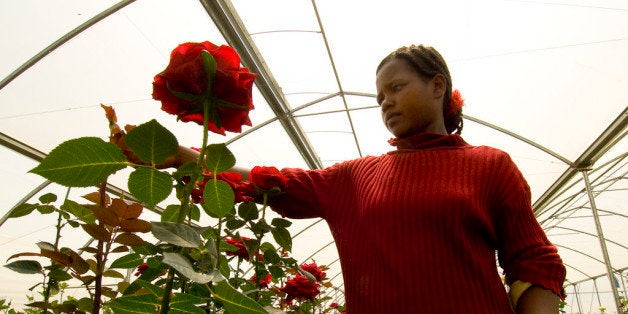
This week, I will be joining a panel of women in trade at the World Trade Organization's Public Forum in Geneva, Switzerland. Along with Lilianne Ploumen, Trade Minister from the Netherlands; Yuejiao Zhang of China's International Trade and Economic Arbitration Commission; former United States Trade Representative Susan Schwab; and Amina Mohamed, Kenya's Cabinet Secretary for Foreign Affairs; we will be discussing how to make trade work more inclusively. For me, the focus will be how to make trade work more inclusively for the poor living in developing countries.
When we look at the inclusion of developing countries in international trade it is clear that trade has been a powerful engine for reducing poverty and has delivered some remarkable gains for the global economy. There are several country examples that tell this story.
China has tripled its share of world trade since joining the WTO in 2001, helping cut its extreme poverty rate from 36 percent at the end of the 1990s to 6 percent in 2011. In Ethiopia, exports of cut flowers from one firm to the European Union helped open the door to an export industry that now employs 50,000 workers. It has also generated more secure wage employment and a pathway out of poverty for the families of those workers.
Since 2000, the developing country share of world trade increased from 33 to 48 percent. South-South trade between developing countries increased from 8 percent of world trade to around 25 percent today. It is clear that without international trade, we could not have reached the goal of halving global poverty since 1990.
But there is still a long way to go. There are almost one billion people still living in extreme poverty and high trade costs still isolate many developing countries and regions from the international trading system. Low-income countries face trade costs in agriculture and manufacturing that are about three times higher than those faced by advanced economies. This creates a barrier to trade for those countries that is very hard to overcome.
Along with working harder to include developing countries in the trading system, we must also work harder to connect people to the full potential benefits of trade, especially the extreme poor and women.
Women continue to face significant inequality of opportunity, both within and outside the household, which can make it difficult to gain from trade opportunities. For example as much as 85 percent of small-scale traders at border crossings in the Great Lakes region of Africa are women -- but the majority of border officials are men, with corruption and gender-based abuse running rampant.
Other types of gender inequality can affect the gains women experience from trade. Take the role of women in global value chains, for example. In one World Bank report that examined a number of case studies, we found that women in the horticulture sector in Honduras were workers, but seldom owners of land. While women might be employees at call centers in Egypt, they are rarely managers. Women in Kenya's tourism industry might clean hotel rooms but they almost never hold the more lucrative job of safari guide.
Two weeks ago, the World Bank launched a report entitled, Women, Business and the Law which catalogues the legal constraints women face in their ability to engage in economic activity. The report has spurred reforms -- over the past two years 65 countries have made 94 legal reforms to the benefit of women.
Tackling these challenges requires a comprehensive approach that recognizes that the effects of trade are not gender-neutral. At the World Bank Group, we have just approved the Great Lakes Trade Facilitation project, which will help reduce discrimination at borders, through actions like improved transparency; training and better monitoring of officials; and working with traders associations to improve the conditions for women to advocate for better rights.
We know that, through partnerships and interventions that recognize gender as a constraint, we can work to ensure that trade brings real benefits for women in terms of jobs and empowerment. It's already happening.
In Cambodia, the export-oriented garment sector is one of the main providers of wage employment. Eight-five percent of total garment industry workers are women. Women in the garment sector receive a positive premium on wages compared with other sectors.
In Lao PDR, we are helping to improve working conditions in garment factories where externally verified improvements can help the industry reach premium buyers. We are also providing grants to women entrepreneurs. While this work is in its early stages, we have begun to see signs of success. One of the garment firms we are working with, for example, has improved its productivity and human resources systems and added 600 new jobs.
Supporting women will help us address the huge challenge facing not just international trade but every development sector: the challenge of ending poverty and creating new and better jobs for people living in developing countries. To get there, we must work together with organizations like the WTO, like COMESA, and like our many other partners at the global, regional and country levels to lower trade costs, ease the flow of goods across and within borders, and ensure that developing countries -- and the women and men that live in them -- are able to make the most out of trade opportunities.